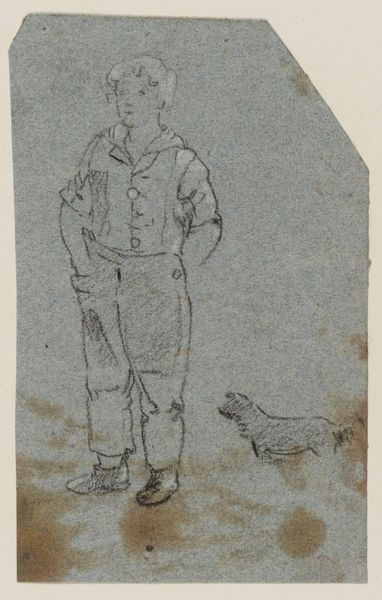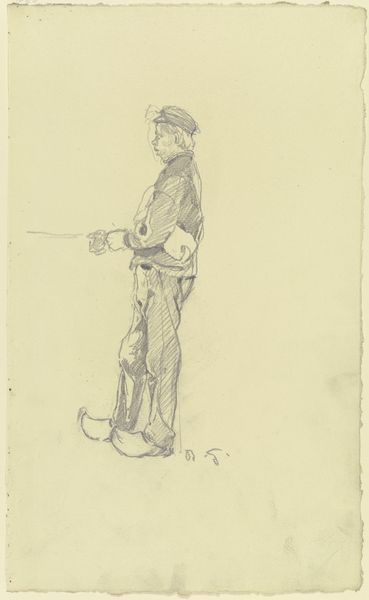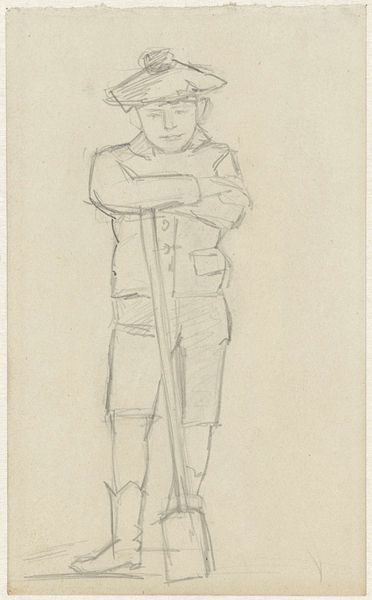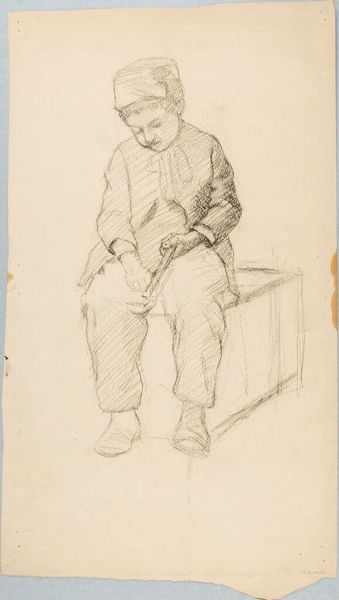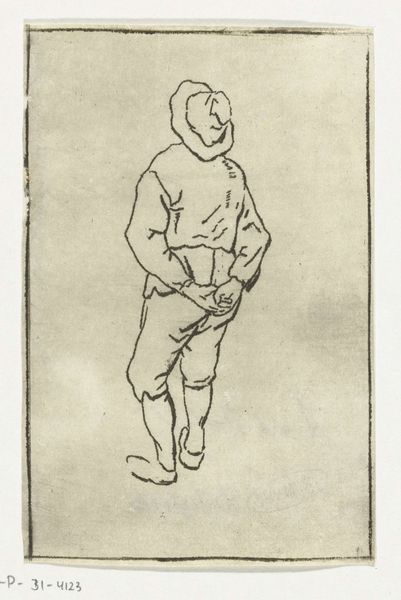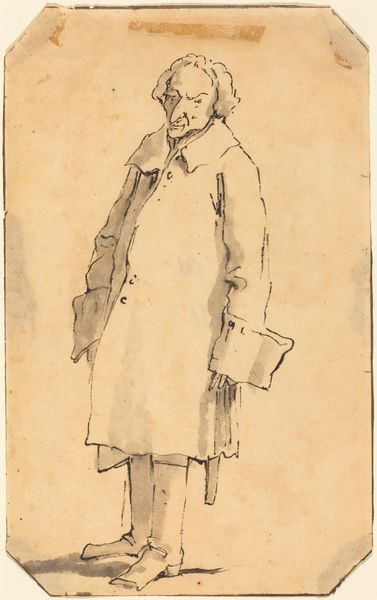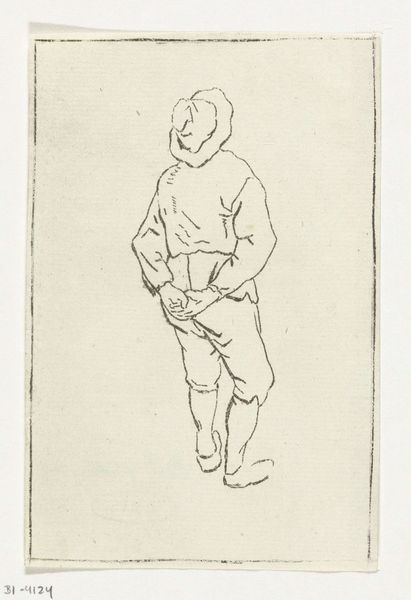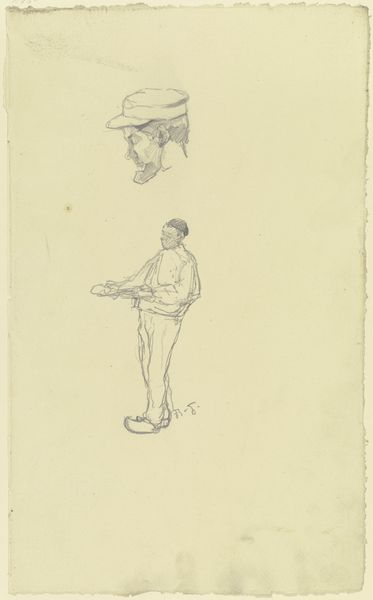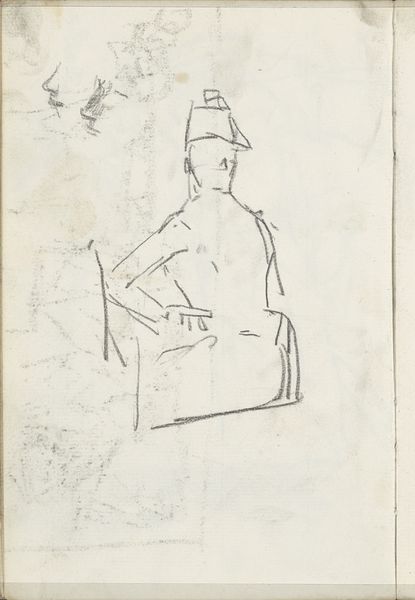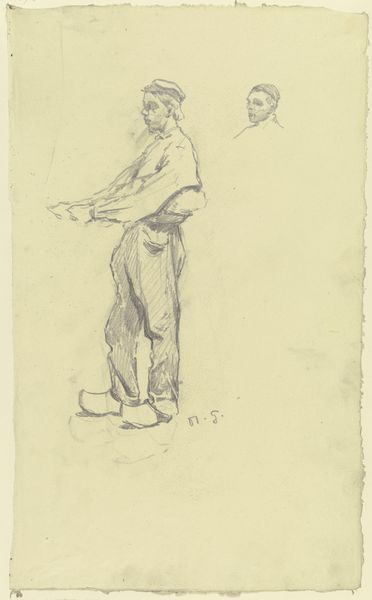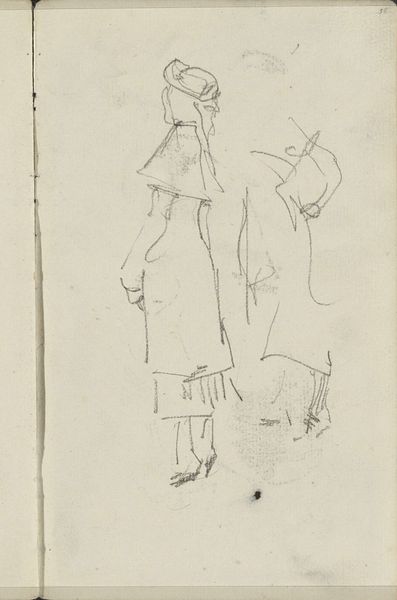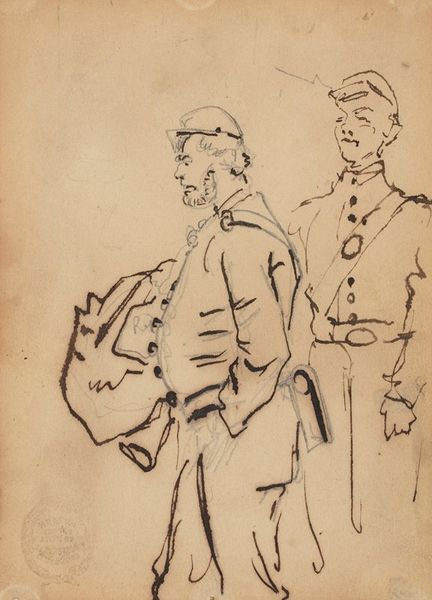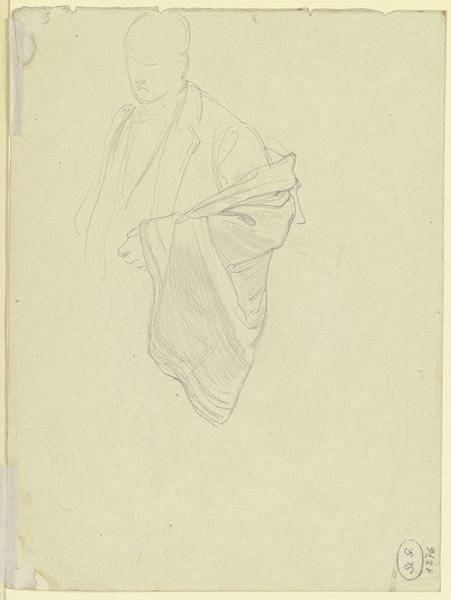
drawing, pencil
#
portrait
#
drawing
#
imaginative character sketch
#
light pencil work
#
quirky sketch
#
pencil sketch
#
figuration
#
personal sketchbook
#
idea generation sketch
#
sketchwork
#
ink drawing experimentation
#
romanticism
#
pencil
#
sketchbook drawing
#
sketchbook art
Dimensions: 102 mm (height) x 171 mm (width) (bladmaal)
Editor: We’re looking at "Standing Man Wearing Cravat Boots and a Large Jacket," a pencil drawing by Christen Købke from 1833. I’m struck by its… economy of line. It feels so quick, so immediate. What stands out to you? Curator: Immediately, I note the rhythmic quality achieved through the repetition of line and form. Observe the parallel hatching that defines the figure’s garments, particularly in the rendering of the cravat boots. Do you see how this technique creates a sense of volume, even within the spareness of the drawing? Editor: Yes, the boots really pop because of that. It almost gives a sense of implied texture. How does the figure’s pose play into the overall composition? Curator: The contrapposto, though subtle, is crucial. Note how the weight is shifted slightly to one leg. It animates the figure, preventing the composition from becoming static. It creates a visual tension, drawing our eye up the body and encouraging scrutiny of each individual mark-making decision. Editor: So even with such a seemingly simple sketch, Købke is manipulating our gaze. The loose lines almost feel haphazard, but they're meticulously placed. Curator: Precisely. The seemingly casual nature of the drawing belies a sophisticated understanding of form and line. It also directs the gaze of the audience towards the figure's somewhat inquisitive expression. Does this placement influence the viewers relationship with the work? Editor: Absolutely! That makes me wonder what Köbke was planning with this character, given it looks like he's sketching out a person from his daily life, which could be a preparatory sketch. Thanks! Curator: And consider its modernity! What an unexpected piece of art for the period. A refreshing, yet historically salient, observation.
Comments
No comments
Be the first to comment and join the conversation on the ultimate creative platform.

